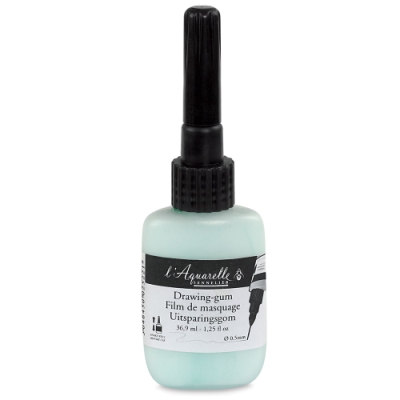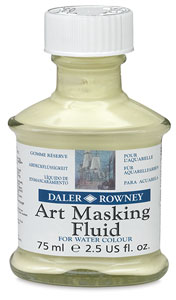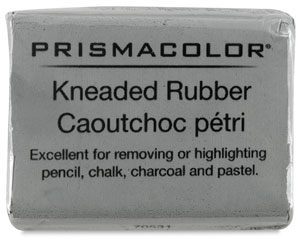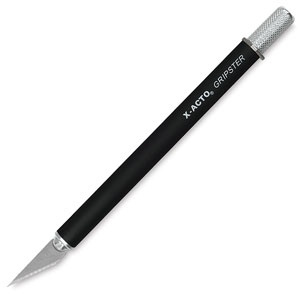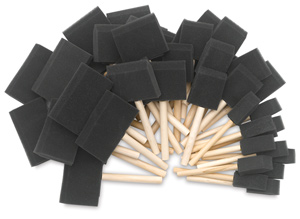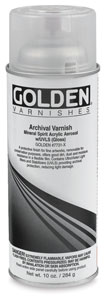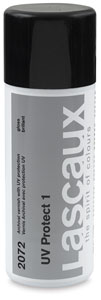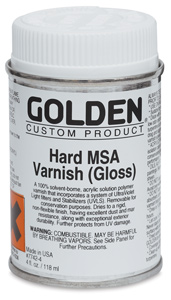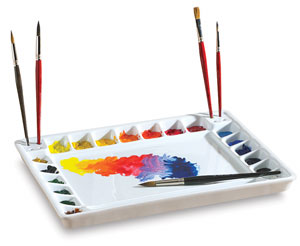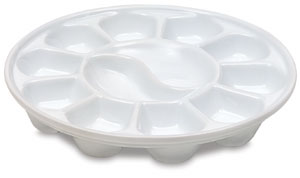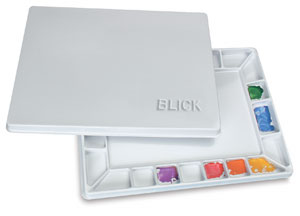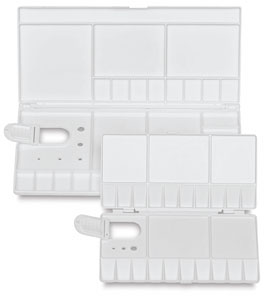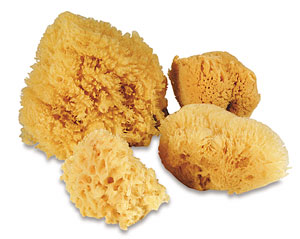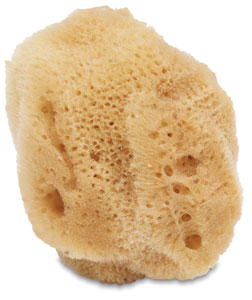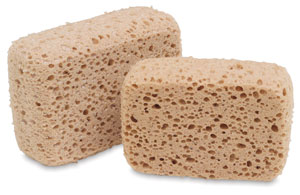Accessories for Watercolor Painting
Learn about various accessories for watercolor painting that you can use to create compelling effects in your watercolor art! These watercolor supplies encompass a wide range of tools and concoctions, so the exact accessories you'll need depends on the watercolor techniques you employ. For example, I've painted an entire watercolor painting using just a single round brush and a few colors. On other occasions I've used almost every one of these accessories: Masking fluid, Lifting Preparation, Scraping and Color Lifting, Sizing Liquid, Varnish, Watercolor Palettes, and Sponges.
Masking Fluid
One of my most used accessories for watercolor painting is masking fluid. Also called frisket fluid, it is like a liquid latex that can be painted over areas of the painting that you want to protect from washes or other applications of paint. For example, you might want parts of the white paper to show through as highlights. Once you apply the masking fluid with a brush, it will dry quickly to form a waterproof coating that will repel waterolor paint. When you're ready, it can be peeled off or removed with an eraser or kneaded rubber. Masking fluid comes in a range of colors which can help you see the areas that have been masked.
Peeling off the dried masking fluid that was protecting the edges of my building from the paint for the sky.
I've provided links below to the relevant products so that you can easily find them on Blick Art Materials, my favorite online art supplier. I'm a member of Blick's affiliate program, which means if you make a purchase after clicking on one of these links, I'll receive a small commission (at no extra cost to you). Your purchase helps support this site and keeps it free of ads. Click here for more info.
In the example above I wanted to make sure that the paint for the sky didn't get on the building. When I was done painting the sky, I simply peeled off the dried masking fluid and voila, the building underneath was still completed unpainted, yet the paint for the sky went right up to the edge of the building. So handy!
Most masking fluid is removable, but you can also buy permanent masking medium that you apply to the support or mix into the paint so that it will repel any paint applied over it.
Another option is to use wax resist sticks to mask areas of your painting. These wax resist sticks allow you to draw lines and shapes on the support that will repel the application of paint.
Lifting Preparation
Lifting preparation is like a primer you apply to the paper before painting that allows you to re-wet and remove dry washes. It's not one of the watercolor supplies that I use, but it can be handy if you know you're going be creating effects that require you to remove dried paint. Lifting preparation also makes it easier to correct mistakes or retroactively reveal highlights. I find it easier to map out my highlights in the beginning and paint them over with masking fluid.
Scraping and Color Lifting Tools
As mentioned above, you can create a whole range of textural effects by scraping off or lifting out dried paint from the support. In addition to the products listed below, you can also use sponges, sandpaper and anything else that you think might leave an interesting texture behind. (For example, some people use bubble wrap to create cool textural effects!)
Sizing Liquid
"Sizing" is an art term for the act of applying something to the support or surface to make it more receptive to the paint. Watercolor papers are generally sized during production, but as you get more experienced you may find that some papers are too absorbent for certain techniques like wet washes. In these cases you can apply sizing liquid to the paper with a brush and after it has dried, the surface will be less absorbent.
Varnish
Watercolor paintings are typically not varnished, but some artists might choose to do so. The traditional and recommended method to protect any watercolor painting is to frame it under glass. There are varnish products that are compatible with watercolor paints, but the downside is that the process is usually irreversable and it's possible that the varnish may aesthetically alter the watercolors in subtle ways.
The Recommended Products below are there to help you browse for art supplies, and if you make a purchase I get a small commission that supports this site and keeps it FREE! Thanks in advance.
I've varnished watercolor paintings before without any problems, but I'd recommend you experiment first to make sure you're happy with the finish. I use Golden Archival Spray Varnish straight on the surface, but you can also apply an isolation coat first. Instructions on how to do this can be found on the Golden website.
Owning a good watercolor palette will make painting a lot easier, especially since you often need to work quickly with watercolors. If you bought a pan set you might have enough space for mixing, but with tubes you'll definitely need a dedicated palette.
Watercolor palettes are usually made from porcelain or plastic. Porcelain is easy to clean but heavy, so it's best suited to work in the studio. Plastic palettes are cheaper and lighter, but they're slightly absorbent which means that they might become stained over time. Go with plastic if you prefer to hold the palette while you paint or if you like to paint outdoors.
Palettes also come in a range of shapes and sizes. Often it comes down to personal preference, but you'll want something with large deep wells for holding paint and lots of space for mixing colors.
You can also save money by improvising a palette from old ceramic plates, yogurt tubs, tin cans, plastic drink bottles and even large sea shells!
Sponges are handy multi-purpose accessories for watercolor painting. They can be used to apply paint and create a range of textural effects. They can lift out paint or mop up runaway streaks. Sponges can also be used to wet paper in preparation for washes or to remove water when you're preparing paper to be stretched.
You can purchase natural or synthetic sponges. As you'd expect, natural sponges are more expensive, but they have a nicer texture and are capable of creating random textures with paint. I've used natural sponges but depending on what I need it for, I sometimes find that a good old household sponge does just as well.
You can check out more art supplies for watercolors and other media via the guide to buying art supplies.


